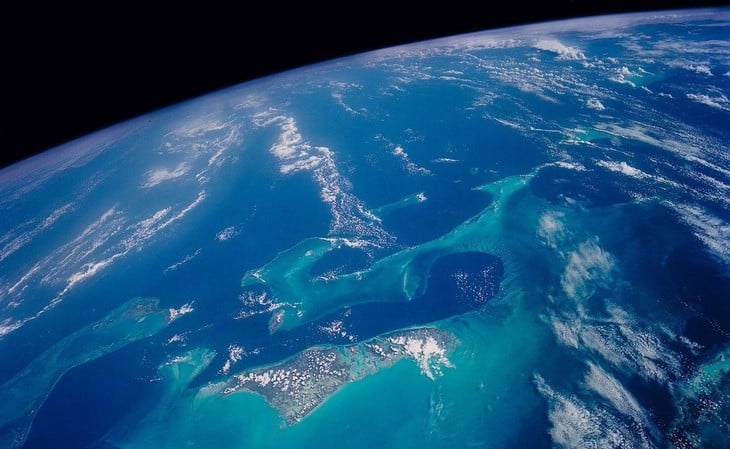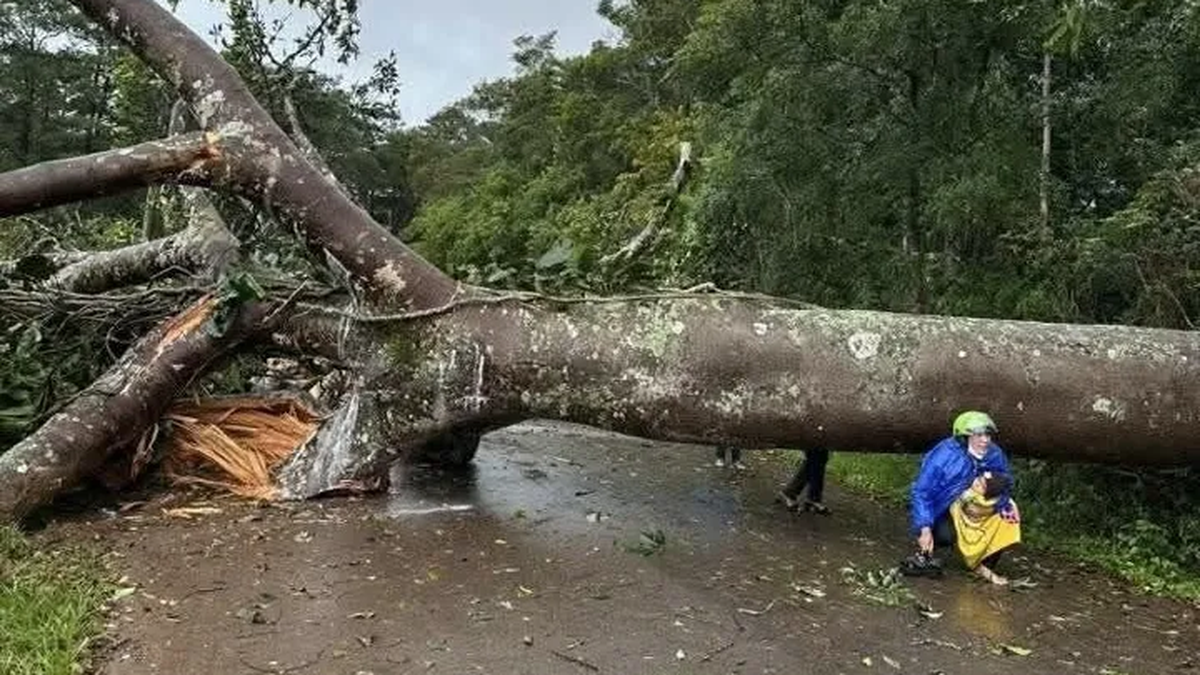
More than 20% of the planet's oceans, which cover 70% of the Earth's surface, have become darker over the past two decades - Photo: NASA
According to Global Change Biology , researchers have found that the depth of the photosynthetic zone, the top layer of the ocean where sunlight and moonlight can penetrate and where about 90% of marine life lives, is decreasing due to changes in the optical properties of seawater.
Scientists used data from NASA's Ocean Color Web satellite, dividing the global ocean into 9km x 9km pixels to measure light levels in the ocean water. A new algorithm was developed to determine the depth of the photosynthetic zone at each location, under both day and night conditions.
More than 9% of the ocean has seen a decrease in the depth of its bright zone of more than 50m. Nearly 3% has seen a decrease of more than 100m. Although about 10% of the ocean has shown signs of “brightening” over the same period, the reasons for this are not yet clear.
According to Mr. Tim Smyth, head of marine biogeochemistry at Plymouth Marine Laboratory (UK), co-author of the study, "if the photosynthetic zone narrows by about 50m over a large area, light-dependent species will be forced to move closer to the surface to survive, leading to increased competition for food and resources, thereby causing fundamental changes in the entire marine ecosystem".
The phenomenon of "darkening" of the ocean is thought to be the result of many factors related to climate change and human activities.
In coastal areas, increased rainfall and agricultural runoff carry nutrients into the sea, fueling the growth of phytoplankton, microscopic plankton, which makes seawater more turbid and blocks light.
In offshore waters, rising sea surface temperatures due to climate change are fueling toxic algal blooms, which also contribute to light blocking and reduced photosynthetic depth.
In particular, the most pronounced changes were recorded in the North and South Poles, as well as the head of the Gulf Stream near Florida (USA), the areas most strongly affected by climate change.
The reduction in underwater light affects not only marine life but also indirectly humans. Moving organisms closer to the surface can change the structure of the food chain, affecting commercial fish such as brown shrimp, tuna and pelagic fish.
Not only that, predators may be moving more into coastal areas in pursuit of schools of baitfish, increasing the risk of encountering them in shallow waters, especially as this phenomenon has been recorded along the East Coast of the United States in recent years.
According to Dr Thomas Davies, associate professor of marine conservation at Plymouth University (UK), "the color of the ocean surface has changed over the past 20 years, possibly due to changes in the plankton population.
But this study provides evidence that those changes lead to widespread darkening, significantly reducing the living space of species that depend on light for survival and reproduction."
With around 80% of the ocean still unexplored, scientists stress that much remains unknown about the long-term consequences, but the current trend is worrying and needs to be closely monitored as the Earth continues to warm.
Source: https://tuoitre.vn/dai-duong-ngay-cang-toi-he-sinh-thai-bien-toan-cau-gap-kho-20250530160020057.htm



























![[Photo] National Assembly Chairman Tran Thanh Man visits Vietnamese Heroic Mother Ta Thi Tran](https://vphoto.vietnam.vn/thumb/1200x675/vietnam/resource/IMAGE/2025/7/20/765c0bd057dd44ad83ab89fe0255b783)





































































Comment (0)